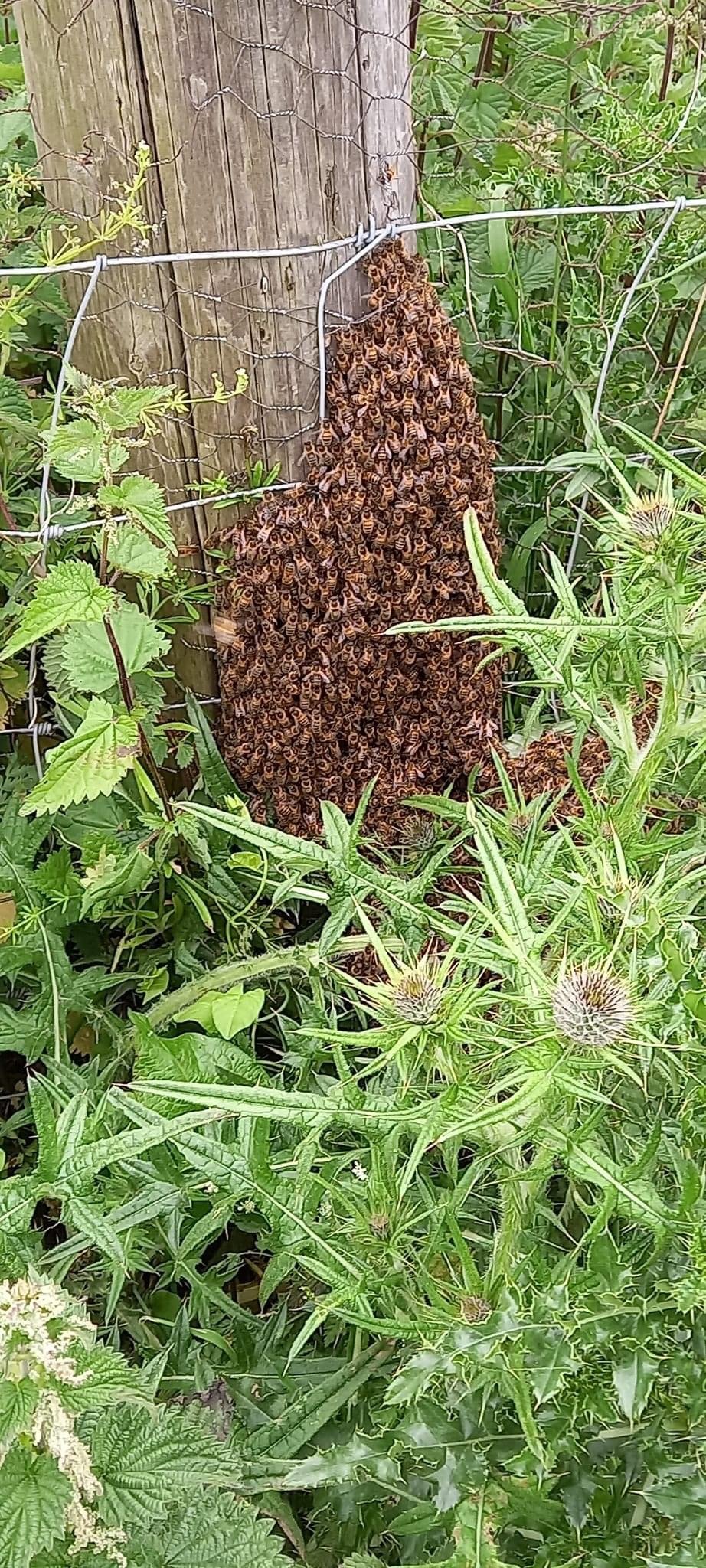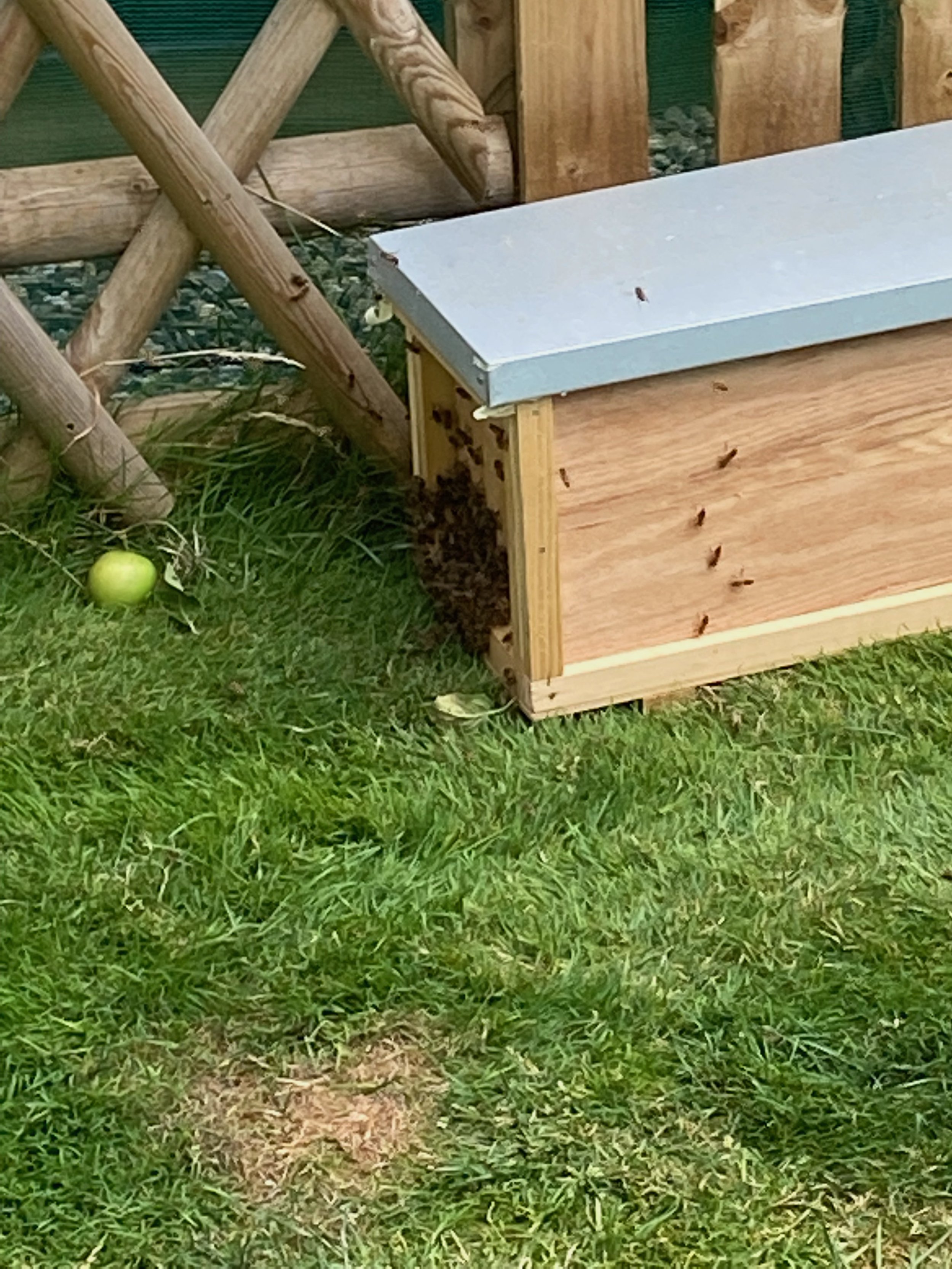Swarms…
Here at BroadBees Honey, we are always happy to come and collect swarms of Honeybees across the Wakefield/Leeds area at No Cost.
If you suspect you have discovered a Swarm please contact us on 07790 629382
If you’re unsure if what you’ve found is honeybees please see pictures of previous swarms we have collected below….
Swarm Recovery Service
Are they Honey Bees?
Wasp
Bumble Bee
Honey Bee
Wasps: We are unable to offer any help/removal with Wasps or Bumble Bees due to insurance/liability reasons.
Bumble Bees: We are unable to offer any help/removal with Wasps or Bumble Bees due to insurance/liability reasons. It should be noted that Bumble Bees rarely cause a problem, they will leave at the end of the summer at which point the nest can easily be moved. Live Bumble Bee removals are very challenging and usually unsuccessful, often resulting in the death of the colony, as such this is not something we encourage and would always recommend waiting for them to leave at the end of the summer.
Please Note:

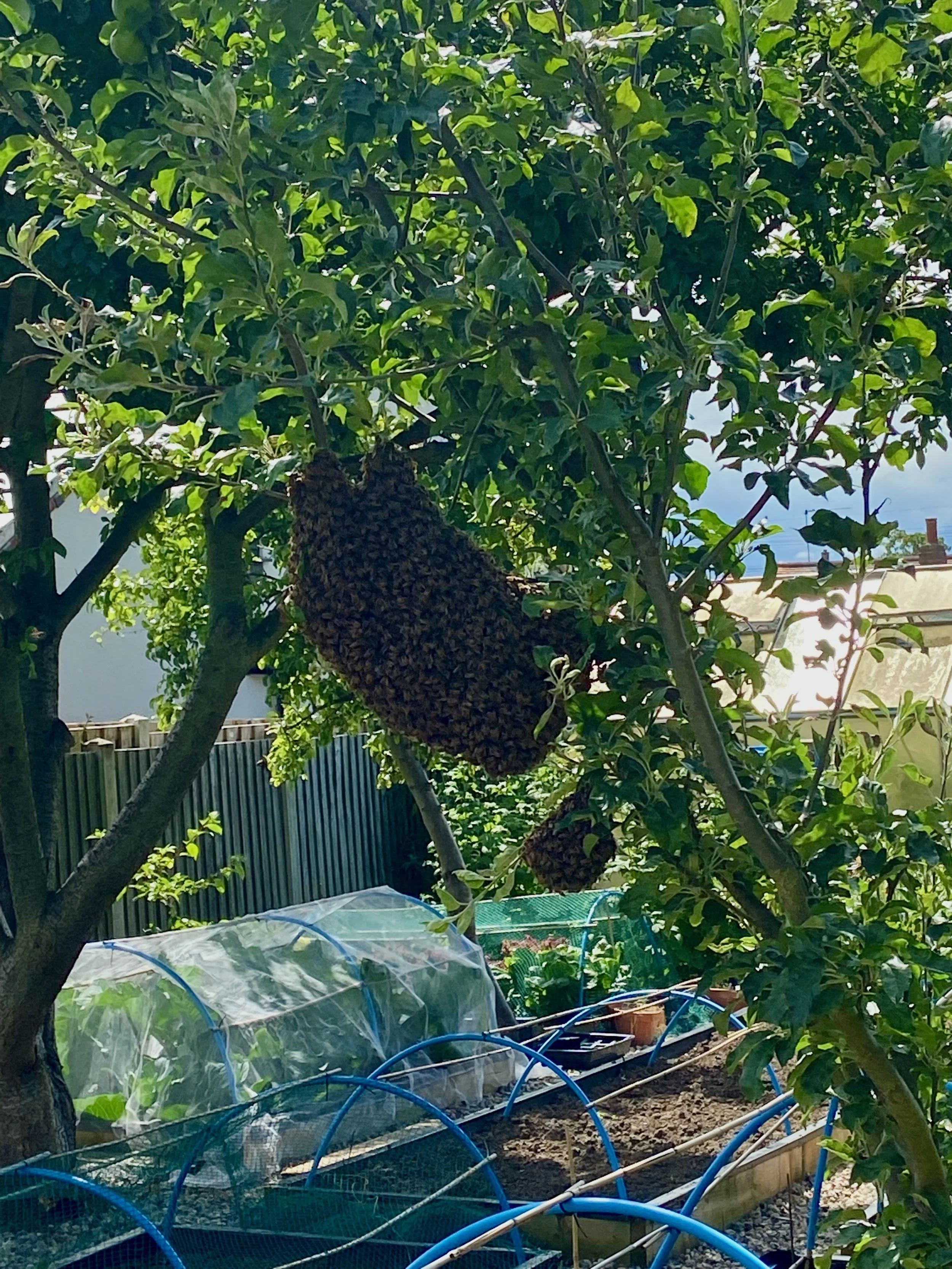
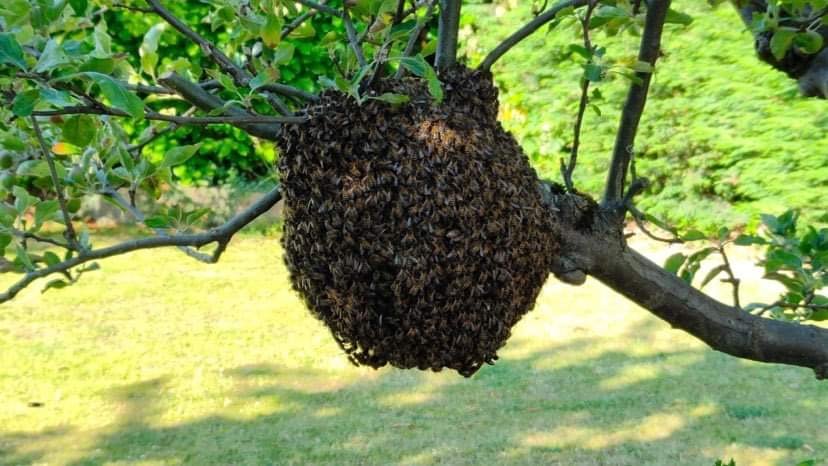
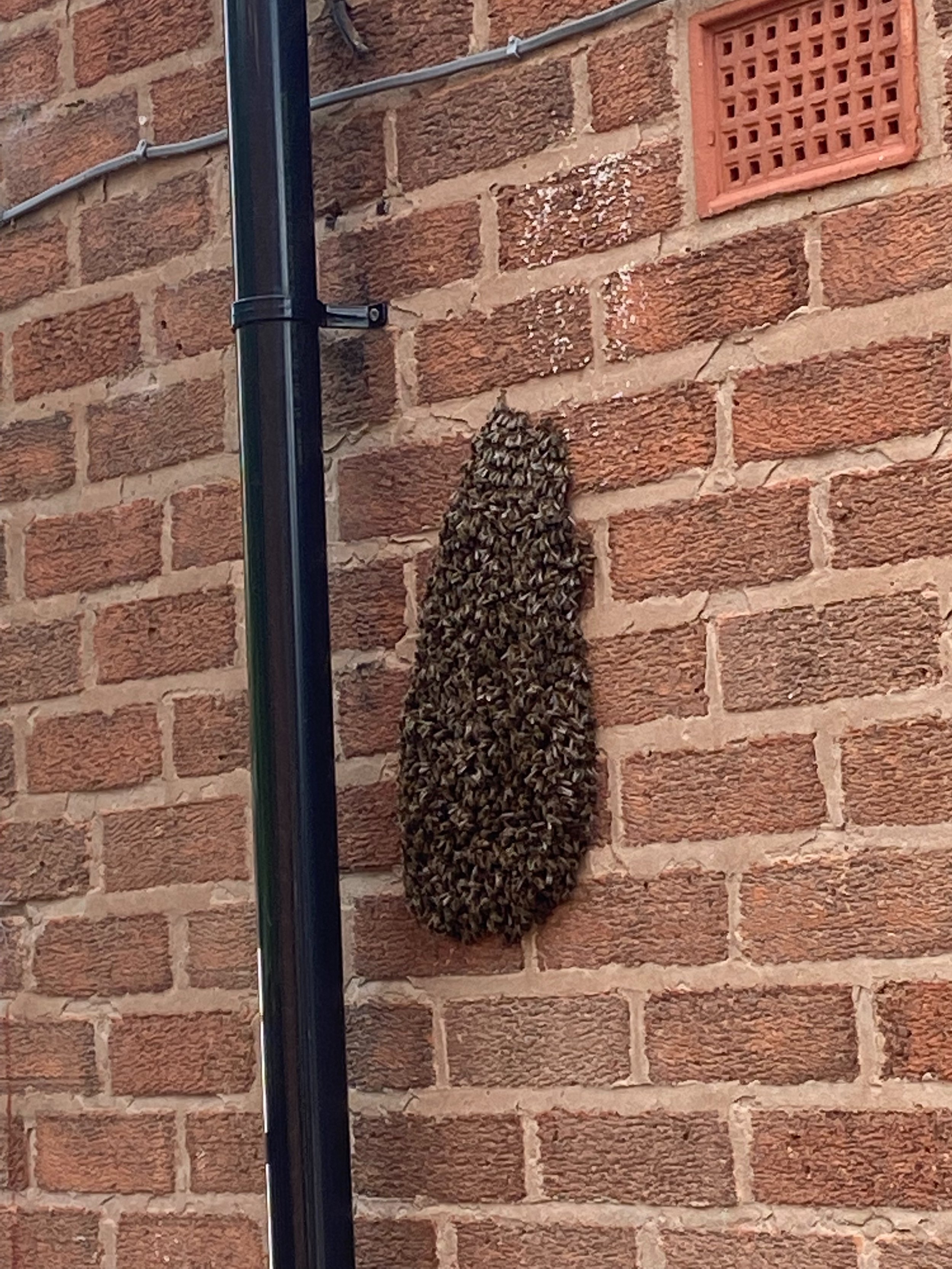
Swarms are the honeybee’s natural method of reproduction. When a colony is running out of space in its current home they begin to prepare to swarm by producing a new queen. Once the new queen is almost ready the old queen leaves with half the bees in the colony. This then produces a cloud of thousands of bees flying together until they stop somewhere to rest. Where they choose to rest is always interesting, a wall, on the ground, 40ft up a tree, it really does vary. Once they’ve landed to rest the hunt begins for a new home.
Swarms of bees are very misunderstood, when the bees are in a settled swarm they have nothing to protect and have just had a big meal and a flight, so even the most aggressive colonies are typically uninterested in stinging anyone. They will usually sit as a ball for anywhere between a few hours to days whilst they search for the perfect home.
Whilst they are in a swarm state they are very easy to relocate and safely rescue and rehome at no impact or cost to whoever’s land they’re on. Once a honeybee colony becomes established in a structure, such as a chimney, wall cavity, or under floorboards they can become a real problem, causing damage, placing large quantities of wax/honey and brood within the structure, having a potentially large impact on people nearby and can be very difficult and expensive to remove. Therefore if you ever come across a swarm of honeybees you should always contact a local beekeeper to collect them and safely rehome them, in the colony’s best interests.
What is a Swarm?
